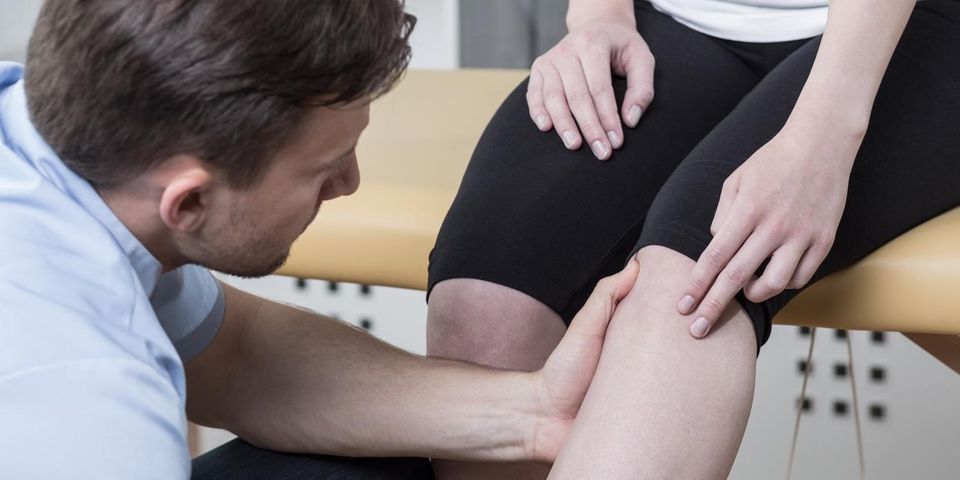
Rheumatoid arthritis (RA) is among the most common autoimmune diseases in the United States, affecting over 1.3 million Americans. While research has yet to pinpoint a direct cause, there are ways you can both lower your risk of having it and manage it with the help of a rheumatologist once you are diagnosed. To know how to treat RA, however, it’s essential to understand how the disease can affect you.
Causes of Rheumatoid Arthritis
Pathology
Rheumatoid arthritis is a systemic autoimmune disease in which the immune system attacks the synovium—the lining of the membranes around your joints—causing inflammation. When left untreated, inflammation can thicken this membrane lining and eventually destroy bone and cartilage in the joint it encompasses. Rheumatoid arthritis also affects surrounding tendons and ligaments, weakening and stretching till the joint loses its shape and alignment.
Risk Factors
There are a variety of qualities, both genetic and habitual, that can put someone at risk of rheumatoid arthritis:
- Age: RA is most common in those middle-aged and older.
- Sex: Women are more likely to have it.
- Genetics: People with a family history of RA have an increased risk of the disease.
- Lifestyle: Smoking not only puts you at greater risk of developing RA, but it also has shown to increase the severity of the disease once you have it. People who are overweight also have a higher risk.
- Environmental exposure: Hazards like asbestos and silica can also cause someone to develop RA. While not much is known about why this condition occurs, situations like those faced by 9/11 first responders show a correlation between environmental exposures and autoimmune disease diagnosis.
Symptoms of Rheumatoid Arthritis
At the Joints
 Due to the inflammation that RA causes, your joints will swell and feel very tender. Early signs will appear in your smaller joints first, particularly the ones in your hands and feet. As the condition worsens, the inflammation will spread to your ankles, knees, elbows, wrists, hips, and shoulders. The tenderness will progress to joint stiffness and pain upon moving them, especially after periods of inactivity, like sleeping. Typically, the symptoms will exist symmetrically throughout your body—if your right knee feels pain, for instance, so will your left knee.
Due to the inflammation that RA causes, your joints will swell and feel very tender. Early signs will appear in your smaller joints first, particularly the ones in your hands and feet. As the condition worsens, the inflammation will spread to your ankles, knees, elbows, wrists, hips, and shoulders. The tenderness will progress to joint stiffness and pain upon moving them, especially after periods of inactivity, like sleeping. Typically, the symptoms will exist symmetrically throughout your body—if your right knee feels pain, for instance, so will your left knee.
Throughout the Body
Beyond joint pain, rheumatoid arthritis can manifest itself through symptoms like fatigue and occasional fevers. These issues arise during stages called “flares,” which are periods when your symptoms have a more severe impact. You can manage flares through the intervention of a skilled rheumatologist, who can guide your treatment through medication and lifestyle changes.
How to Treat Rheumatoid Arthritis
Diagnosis
Before you can treat RA, you need to confirm that your symptoms are the result of this disease. Rheumatologists will typically use a combination of tests to diagnose your condition, especially if they believe you are in the early stages of rheumatoid arthritis, which is more difficult to detect. They are also looking to eliminate other possibilities from the diagnosis, like forms of cancer or osteoarthritis. Below are a few standard diagnostic techniques used:
- X-rays give an internal view of bones and tissues affected. With early-stage RA, though, these images will rarely show signs of damage. Ultrasounds and MRIs can offer a more comprehensive representation of bone damage and inflammation.
- Joint aspiration pulls a small fluid sample from a swollen joint to look for signs of infection.
- Nodule biopsies analyze a tissue sample to test for cancers or other abnormalities.
- Blood tests can find instances of antibodies called rheumatoid factor or cyclic citrullinated antibodies, both common signs of RA.
Treatment
Treatment of rheumatoid arthritis depends on the severity of your condition. For those that catch it early, a combination of medicine, splints, and physical therapy can manage flares. Rheumatologists will prescribe medication that relieves pain, treats inflammation, and slows the disease from progressing. The path you take depends on other health concerns, particularly the effects of these prescriptions on your blood cells, liver, and kidneys.
Splints protect joints from malformation, while physical therapy aims to increase the strength and mobility of the inflamed joints. Physical therapists will also prescribe low-impact forms of exercise in moderation, like cycling or swimming. Canes, crutches, and walkers are also ways to ease the stress on the affected joints during your day-to-day.
When these treatments don’t work, though, sometimes a rheumatologist will suggest surgery. Surgical cleaning will remove the inflamed and diseased tissues in smaller joints—like in your hands—to ease stiffness. If this course of action isn’t sufficient, your rheumatologist will result to an arthroplasty, which replaces the destroyed joint with an artificial one made of metal, plastic, or silicone rubber. In some cases, the new joint is made from your own tissue pulled from another healthy part of the body.
Rheumatoid arthritis is manageable long-term if you seek out the right help. In Albany, NY, patients in need of an experienced physician turn to Urgent & Primary Care. This father-daughter practice aims to offer the best primary care services that help members of the community have healthy, active lives. Dr. Dipti Bhoiwala is a certified rheumatologist, and she is committed to the complete supervision of her patients in need of RA treatment—from medication and pain management to changes in lifestyle. For more information about how this team of physicians can help you, visit their website or call them today at (518) 463-8262.
About the Business
Have a question? Ask the experts!
Send your question

